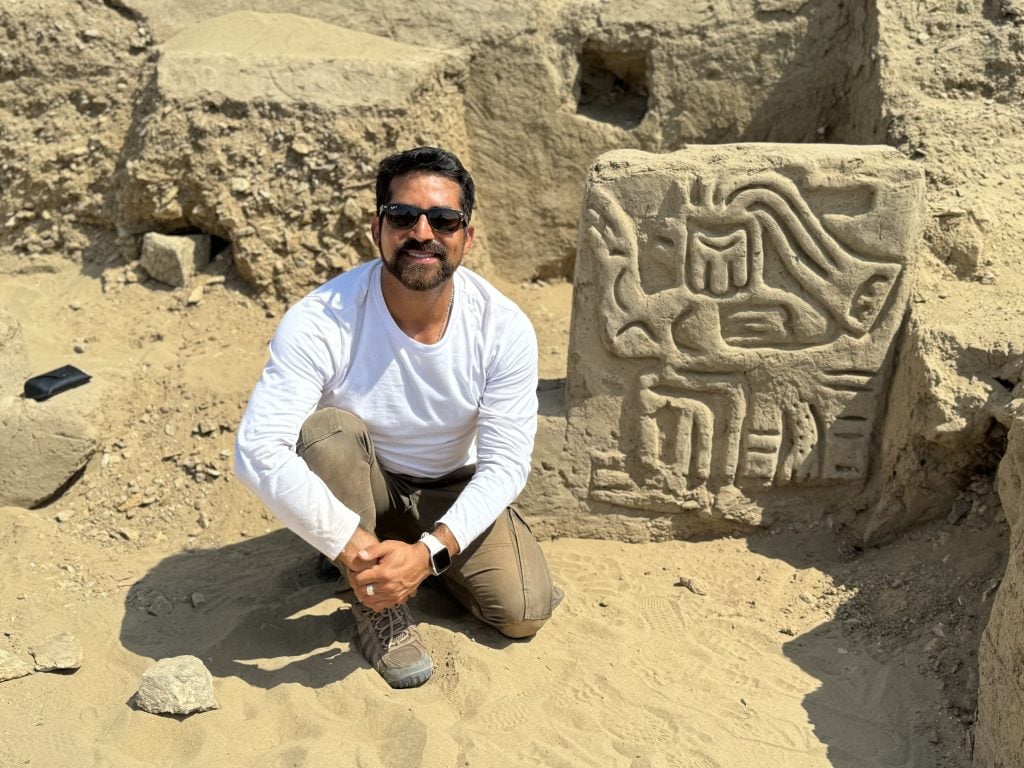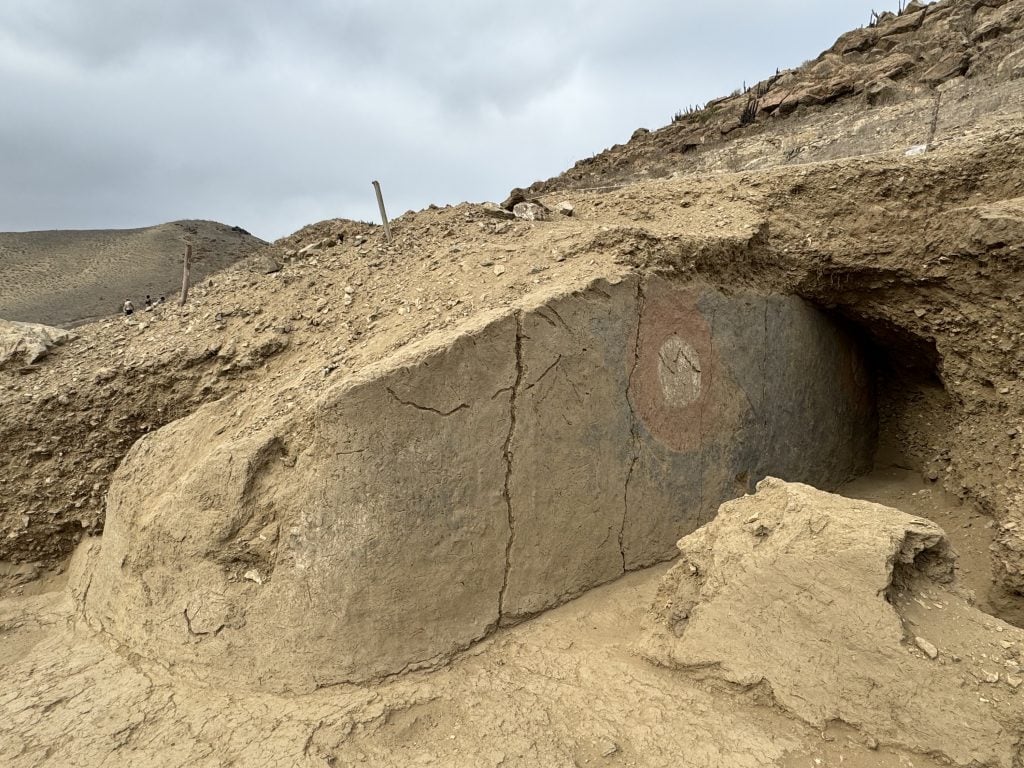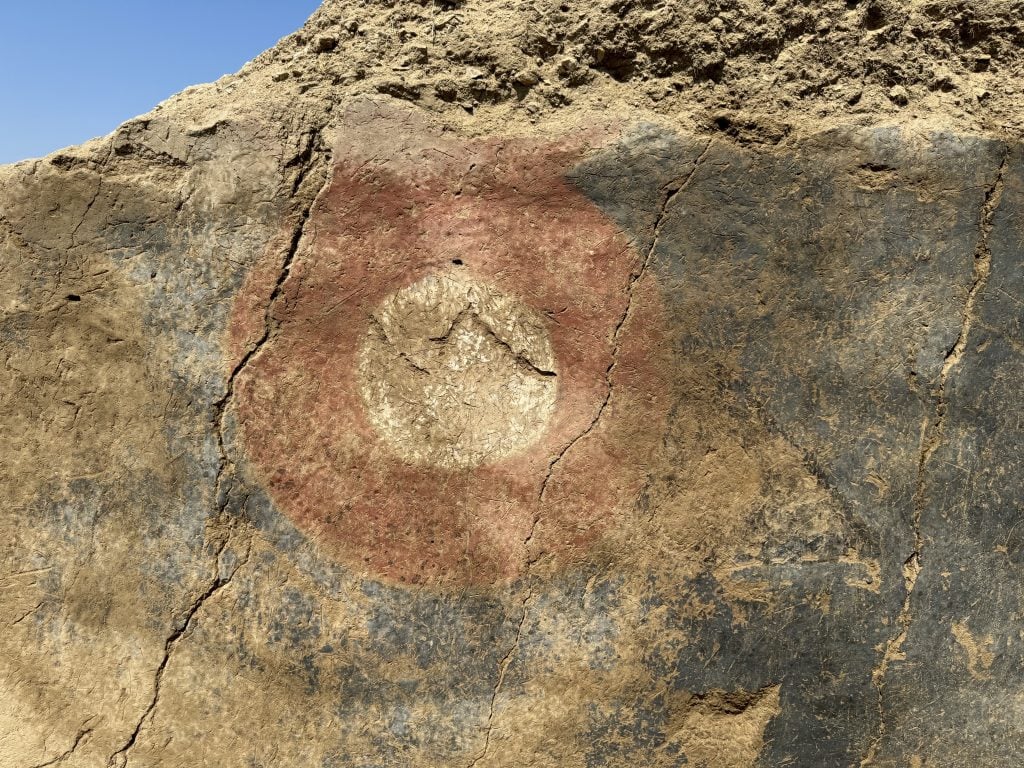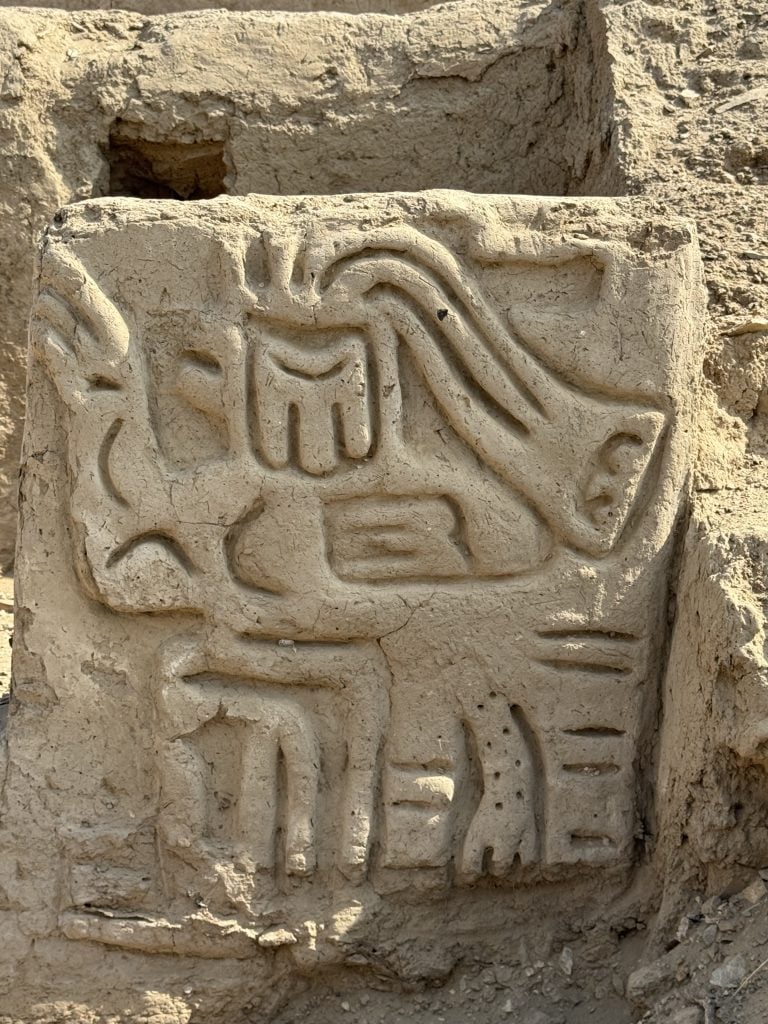Art World
4,000-Year-Old Temple Predating Machu Picchu Unearthed in Peru
Intricate carvings depicting ancient gods adorn much of the structure.

Intricate carvings depicting ancient gods adorn much of the structure.

Adnan Qiblawi

Archaeologists working in Peru have made a truly remarkable discovery. The remains of an ancient temple and theater that have been dated to 3,500 years older than the famed ancient site of Machu Picchu have been uncovered by a team led by Luis Muro Ynoñán from the Field Museum in Chicago, Illinois.
While Machu Picchu, Peru’s most renowned archaeological site, was constructed by the Incan Empire approximately 600 years ago, the newly discovered temple predates it by a whopping 3,500 years. The people who built it were older than the Inca and even their predecessors, such as the Moche and Nazca cultures. “We don’t know what these people called themselves or how they were known by others. Our knowledge of them is derived solely from what they left behind: their houses, temples, and funerary goods,” Muro Ynoñán explained in a press release.

Courtesy of Ucupe Cultural Landscape Archaeological Project.
The discovery came after local authorities reported looting near the northern Peruvian town of Zaña, prompting Muro Ynoñán and his team to intervene and study the area before it was further damaged. With support from organizations like Dumbarton Oaks, Archaeology in Action, and the Pontifical Catholic University of Peru, the excavation commenced in June 2024.
In a 33-square-foot excavation plot, the scientists found ancient walls made of mud and clay just six feet under the ground.

Details of the discovery in Peru. Courtesy of Ucupe Cultural Landscape Archaeological Project.
Further excavation revealed a large temple built into the mountainside and a small theater with a stage-like platform, likely used for rituals. “The people here created complex religious systems and perceptions about their cosmos,” Muro Ynoñán says. “Religion was an important aspect of the emergence of political authority. People used religion to wield control over each other, early leaders personified mythological figures in performances. It gives us insight into the human mind because religion is still used as a tool for political purposes today.”
For Muro Ynoñán, this is more than a professional accomplishment, it’s personal. “This is the story of my own ancestors” he said, noting that both his parents are from the area. “It was really incredible to come face to face with these depictions of an ancient god that was so important for these ancient groups… My connection with it is so special, so deep.”

A detail from the discovery. Courtesy of Ucupe Cultural Landscape Archaeological Project.
The theater’s staircases featured mud panels with intricate carvings of a mythological bird-like creature found in similar ancient Andean sites. Those sites were dated to the Initial Period, around 4,000 years ago, when a sedentary agricultural lifestyle took hold in Peru, leading to the development of crafts like weaving, pottery, and stone carving. Despite its name, the Initial Period was not the beginning of human habitation in Peru, which dates back 15,000 years. During the Preceramic Period (5000-3000 BCE), coastal Peruvians began forming societies and complex political systems. The Initial Period followed, starting around 2000 BCE and lasting until 900 BCE.
The team also found large murals from which they extracted pigment samples for analysis to determine their origins and confirm the site’s age through carbon dating.